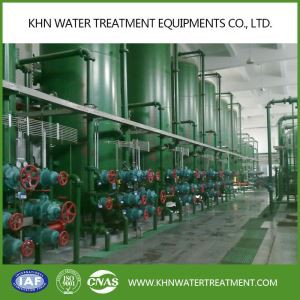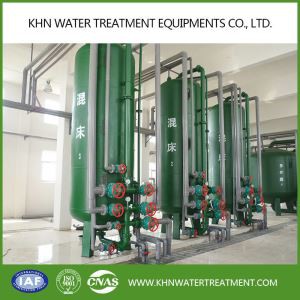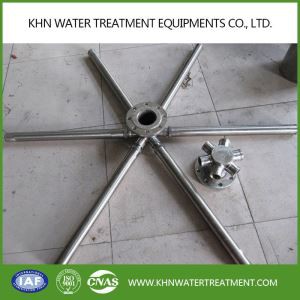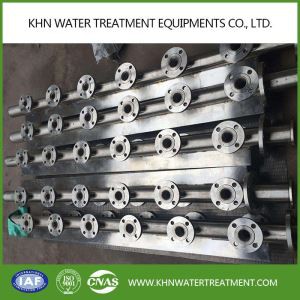
2B3T Type Ion Exchanger
In order to obtain better desalination effect, strong acid cation resin should be loaded in the cation bed, and strong alkali cation resin should be loaded in the anion bed.
Send Inquiry2B3T type ion exchanger Introduction
2B3T type ion exchanger means that water passes through a system equipped with a hydrogen-type cation exchanger (cation bed) and a hydrogen-oxygen-type anion exchanger (anion bed) in sequence, and various mineral salts in the water can be basically removed through the 2B3T type ion exchanger. In order to obtain better desalination effect, strong acid cation resin should be loaded in the cation bed, and strong alkali cation resin should be loaded in the anion bed.
Technical parameters
Model | KIE-1000/15 | KIE -1250/25 | KIE -1600/40 | KIE -1800/50 | ||||||||
Diameter | Ø1000 | Ø1250 | Ø1600 | Ø1800 | ||||||||
Resin height | 1600 | 2000 | 2500 | 1600 | 2000 | 2500 | 1600 | 2000 | 2500 | 1600 | 2000 | 2500 |
Capacity(t/h) | 15 | 25 | 40 | 50 | ||||||||
Resin volume | 1.26 | 1.57 | 1.96 | 1.96 | 2.45 | 3.06 | 3.2 | 4 | 5 | 4.07 | 5.1 | 6.36 |
Equipment weight | 1655 | 1789 | 1908 | 1988 | 2180 | 2362 | 2710 | 2932 | 3180 | 3520 | 3760 | 4060 |
Operating load | 5094 | 5398 | 5896 | 7540 | 8520 | 9640 | 11630 | 13100 | 14800 | 18058 | 19080 | 20672 |
Model | KIE -2000/65 | KIE -2200/75 | KIE -2500/100 | KIE -3200/160 | ||||||||
Diameter | Ø2000 | Ø2200 | Ø2500 | Ø3200 | ||||||||
Resin height | 1600 | 2000 | 2500 | 1600 | 2000 | 2500 | 1600 | 2000 | 2500 | 1600 | 1800 | 2500 |
Capacity(t/h) | 65 | 75 | 100 | 160 | ||||||||
Resin volume | 5.02 | 6.28 | 7.8 | 6.08 | 7.6 | 9.5 | 7.85 | 9.8 | 12.27 | 12.86 | 16.08 | 0.16 |
Equipment weight | 3775 | 4019 | 4495 | 5330 | 5536 | 6409 | 6084 | 6574 | 7169 | 9120 | 9864 | 10775 |
Operating load | 18350 | 20590 | 23530 | 27656 | 29210 | 31150 | 29220 | 32650 | 36920 | 49310 | 54850 | 61860 |
Product detail
Original: Jiangsu, China
Certification: ISO9001, ISO14001, etc.
Material: FRP/Q235
Voltage: 380V 50Hz, the voltage can be as local demand
Payment term: TT, LC
Market: Middle East/ Africa/Asia/South America/Europe/North America
Warranty: 1 year
MOQ: 1 set
Equipment characteristics
(1) When the anion exchange resin fails to be regenerated, it is regenerated with NaOH. If the anion bed is placed in front, then the OH- in the regenerant will be adsorbed on the anion resin during regeneration. During operation, it will encounter cation Ca2 + in water , Mg2 +, Fe3 +, etc., the result is the formation of Ca (OH) 2, Mg (OH) 2, Fe (OH) 3, Ca (HSiO3) 2, etc.
Precipitation adheres to the surface of the anion resin, blocks and contaminates the resin, prevents it from continuing ion exchange, and is difficult to remove.
(2) The exchange capacity of the anion exchange resin is much lower than that of the cation exchange resin, and it is extremely susceptible to contamination by organic matter. Therefore, if the anion bed is placed in front of the cation bed, there is bound to be more opportunities to suffer from organic pollution. Lower, which is detrimental to desalination treatment.
(3) One of the most difficult points of the desalination treatment is to remove the silicate HSiO3 in the water, which is removed by the strong base anion exchange resin. However, the silicate HSiO3- exists in the alkaline water as salt NaHSiO3, and the HSiO3- in the acidic water exists in the form of silicate H2SiO3. The exchange capacity of strong base anion exchange resin for silicic acid is much greater than that of silicate, that is, it is best to exchange in the case of acidic water, and the effluent of the cation exchange tower is just acidic water, so After the anion bed is set in the cation bed, it is very beneficial to remove the silicate in water.
(4) There is a reversible phenomenon in the exchange reaction of the ion exchange resin. This is the counter ion effect, so it is necessary to have a strong exchange potential for ion exchange to proceed smoothly. Put the strong acid cation resin with large exchange capacity in the first stage, the exchanged H + quickly generates inorganic acid with the anion in the water, and then the OH- exchanged through the anion resin, so that H + and OH- generate H2O, eliminating the effect of counter ion , Very beneficial to the anion exchange reaction.
(5) The acidic effluent of the cation exchanger can neutralize the alkalinity (HCO3-) in the water, and the generated H2CO3 can be removed by the carbon remover. Therefore, the cation bed can reduce the load of the anion bed.
Product process
Mentioned in the analysis of the dynamic ion exchange reaction that when the hydrogen ion exchange is running until the sodium leakage is invalid, the effluent of the whole operating cycle is acidic, and its acidity is equivalent to the sum of strong acid anions in the influent. If the leakage hardness is invalid, the effluent will not be acidic when the hydrogen ion exchange is completely converted to sodium ion exchange.
This requires that the softened water tank has enough capacity to mix the acidic water in the early stage of the hydrogen exchanger with the alkaline water in the later stage. Since this operation mode is more complicated and unreliable, in the -Na parallel system, the H exchanger to control sodium leakage as the end point of failure.
The carbon remover is not provided when the water supply is small or the HCO3 content of the influent is low. In the 2B3T type ion exchanger system, can the position of the cation bed and the anion bed be exchanged? From the perspective of the desalting reaction formula, there seems to be no difference, but practice has proved that the following problems exist before the anion bed is placed in the cation bed. For example, when water first flows through the anion bed, the water is strongly alkaline, and calcium and magnesium deposits are easily formed in the anion resin layer.
Secondly, under strong alkali conditions, the ability of anion resin to remove silicic acid compounds is greatly reduced, affecting the quality of effluent water. This issue will be further elaborated when introducing anion bed exchange. Therefore, in practice, the cation bed is placed before the anion bed.
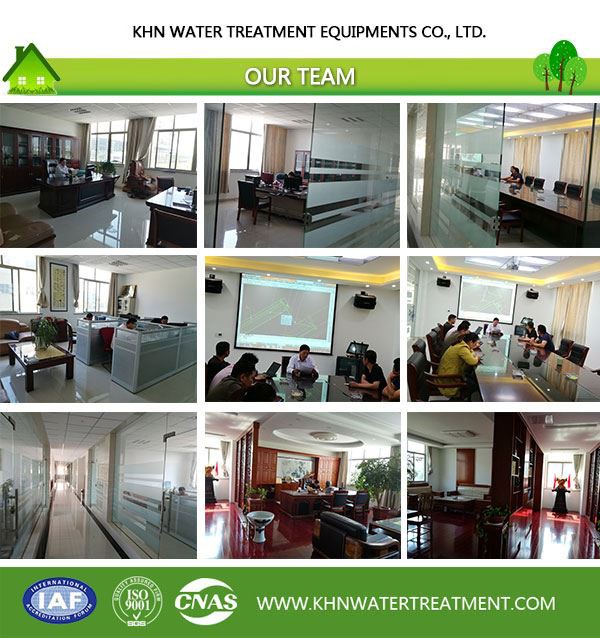
Hot Tags: 2b3t type ion exchanger, China, suppliers, manufacturers, factory, customized, price, OEM


